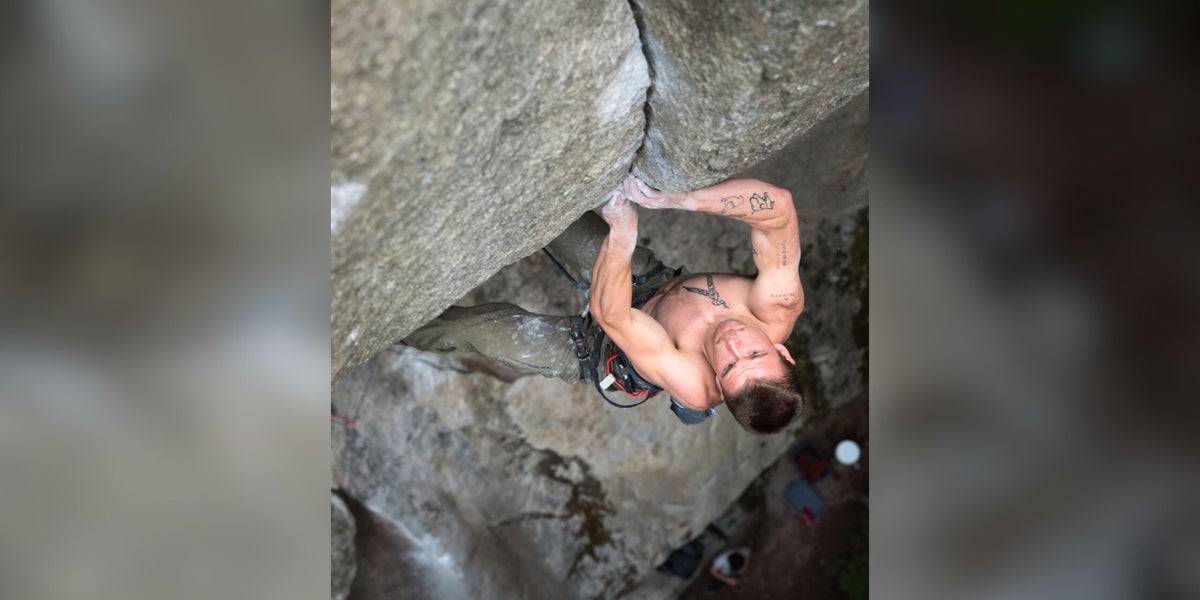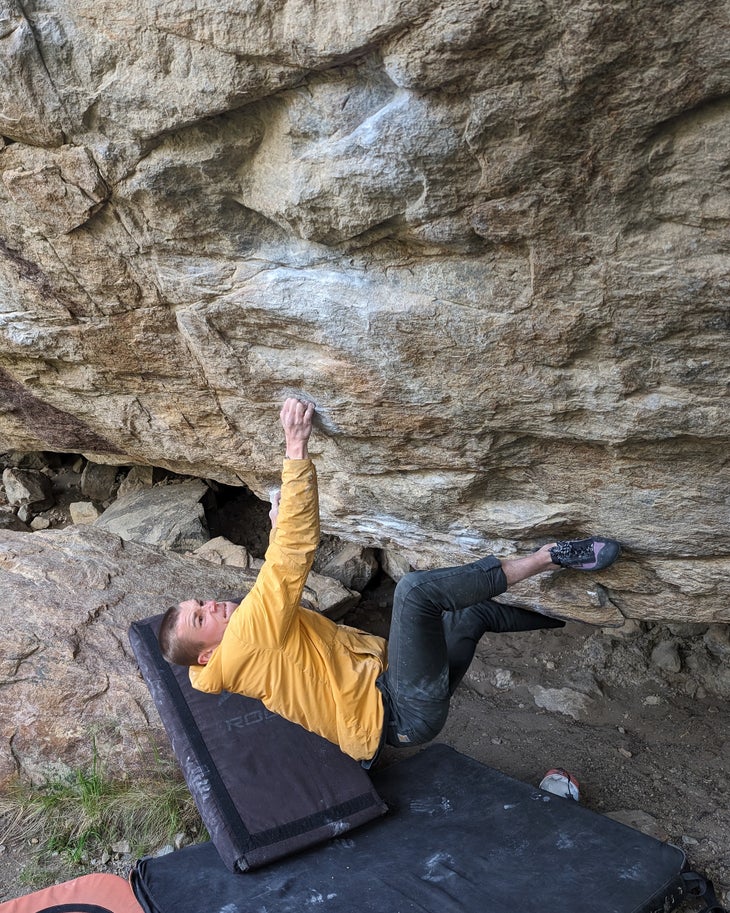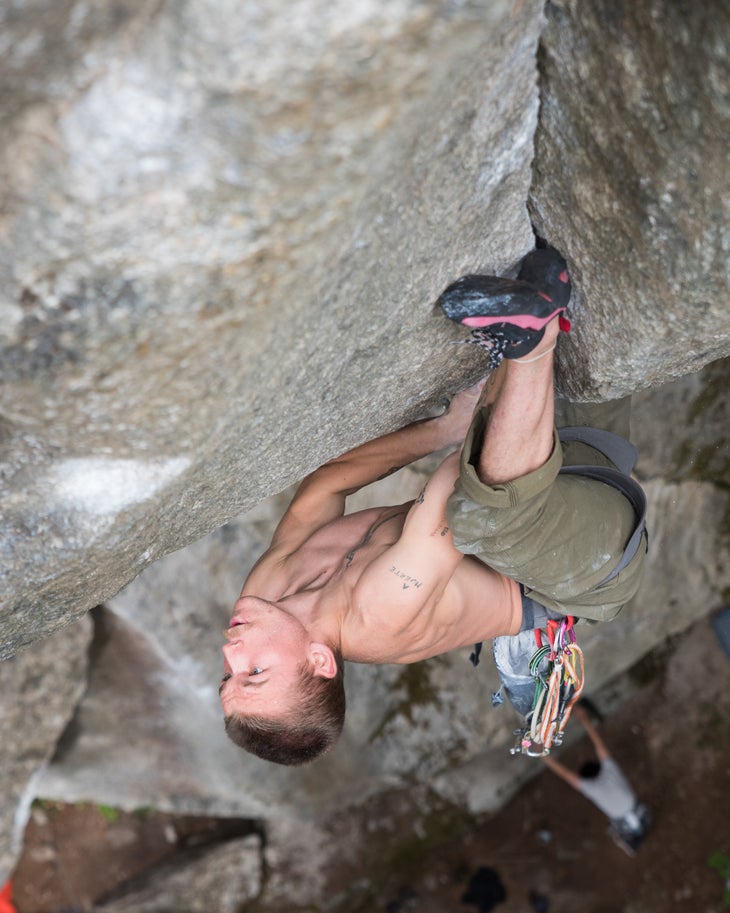Coach Reviews: Why Steve Bechtel’s Training Team Blew Us Away

Climb Strong—the brainchild of Steve Bechtel—is a multi-coach hive of services, offering highly personalized coaching and a plethora of free information. They have coached some truly badass climbers. For four months in autumn 2023, I trained with them too. Here’s the gist: I reviewed a very comprehensive, expensive, one-on-one personal training plan created by a knowledgeable team and delivered by a brilliant coach, Ken Klein.
What I liked about working with Climb Strong was the general feeling of transparency and care. “There is every chance you can improve without having to hire a coach right away,” Bechtel writes on their website. “We have hundreds of articles available on the Climb Strong website, hours of in-depth video, and dozens of template training plans. Only once you’ve exhausted these resources do we suggest you get in touch.”
I really like that!

Me
My name is Nat. I’m 23, and am a White, cisgendered-male Canadian. I’ve been climbing for around seven years, and have trained consistently for the last four winters, but never with a plan prescribed by a coach. I like training. My training “plans” have always been made with the consultation of friends (some of whom have taken extensive training plans similar to this one), the internet, and my own imagination. Not scientific, but, so far, effective and fun.
I consider myself quite goal-oriented, and usually train with specific routes in mind. These routes are almost always single-pitch trad routes or multi-pitch free climbs. I have redpointed 5.14b. I sometimes climb 5.13 in a handful of tries. I often fall on 5.11, 5.12, and 5.13; in December, I learned I can’t climb 5.11a with a backpack on. For this training block, my goal was primarily to build a solid foundation for a few varied goals in the spring (a couple single pitch trad routes, and a long multi-pitch). I also had some time off school and went on a short climbing trip around Halloween, which the training adjusted to. Generally speaking, I consider my weakness to be endurance; most of my hard redpoints have been short, punchy climbs.
While reviewing this plan I was a full-time student living in a city with a very subpar climbing gym by 2024 standards. The gym had a Tension Board, weight plates (brought to the gym by members), a pull-up bar, and some hangboards including a Beastmaker 2000. There was no campus board, no dedicated weight room or equipment beyond the plates (and what folks brought from home), and the boulders were reset every four months. I also had access to a standard fitness gym, which was a two-minute drive from the climbing gym.

The plan
I reviewed Climb Strong’s premium coaching plan from September to December 2023. This would have cost me $460 month-to-month, or $325 per month with a year-long commitment. It was a privilege to review this plan, because I will likely never be able (or willing) to spend that much on coaching. This plan includes a monthly training schedule, weekly meeting with a coach, weekly program adjustments, and same-day responses from your coach; I basically had a personal trainer! It was way more than I needed, to be honest, but the sheer amount of support justified the price to me; I don’t really know what else I could’ve even asked for. If the cost of the program was coming out of my own wallet, I’d probably choose the one-hour consultation option ($140) with a coach (you can pick any Climb Strong coach) to consult on a training plan I constructed myself.
The coach
Based on your focus (bouldering, route climbing, alpine/big wall climbing), you can select your coach. My coach was Ken Klein, a Certified Personal Trainer and Certified Performance Climbing Coach. I found Ken to be knowledgeable, accommodating to my schedule, transparent, and excited.
Execution of the plan
The plan began with an extensive survey. There were questions on my climbing experience, goals, available equipment, time commitments, levels of stress, sleep, how much I smoke/drink (apparently you can put a price on morale), and any accommodations I would like my coach to make regarding access and ability.
After that, I met with Ken for the first time to discuss my responses over a video chat. He had a plan ready within two weeks (which was mostly due to my availability, as I was still on a climbing trip and in the process of moving). I then did a classic assessment (max hangs)—but with a twist! The assessment was two days and included a max boulder (in a session) element, as well as a capacity bouldering session to test endurance. This was important, in hindsight, as the plan was quite demanding—and featured a lot of mid-level endurance training in preparation for my Halloween trip. I think Ken was more interested in my capacity to avoid injury, rather than setting a baseline from which to progress. This philosophy of incorporating actual climbing into the assessment phase is likely a result of an ethos I perceived from Climb Strong: you cannot replace climbing, and you shouldn’t try to; we’re training to go climbing. That certainly aligns with my own purpose and view of training.
The plan was delivered through the Fitness App. Within the app was a schedule showing days and assigned workouts, instructive videos on assigned workouts, and instant messaging with Ken. It was very accommodating and personalized. We aimed to do some workouts I really enjoyed, and some new ones that he thought would be applicable to my goals. If school was heavy one week, he’d pare the workouts back. There was a constant fine-tuning. I just showed up! It was bougie!
I’m not going to divulge the whole damn plan out of respect for the folks at Climb Strong (though they divulge a whole bunch of stuff for free), but here are some highlights of the actual training:
- The 3-6-9 hangboard protocol. I’ve already recommended this to friends and have incorporated it into my own plan. This is Climb Strong’s bread and butter.
- I spent a fair bit of time in the fitness gym, including squatting for the first time ever. This time in the gym was partly to accommodate for the lack of weight facilities at the climbing gym, I think, but it made the mid-level endurance training prescribed later feel much less sapping than it had in the past (that’s an anecdotal observation, for the record).
- I learned a lot about warming up. They have some great warm up routines that made me realize how shit I am at warming up. It isn’t complicated, just an array of lower and upper body exercises, but damn!
- The drills. Ken prescribed some legit climbing drills—one was to climb problems using only heel hooks, as I’m historically quite bad at heel hooks. It felt goofy, but wow, so helpful. (To anyone reading, it is sacrilegious to do this on someone’s project. Just don’t.)

The results
With a week off from school, I headed on my little climbing trip feeling strong and all fired up to SEND only to get sick and throw up in my mouth mid-redpoint attempt. So, no, I don’t have a very clear “I did X and got Z” training story for you. But—and this is big—I didn’t get injured, and felt like I was really pushing myself without feeling tweaky. I am genuinely pleased with the results and am implementing workouts I acquired from this plan (mostly lifting more weights, and the 3-6-9 hangboarding) into my own plan this winter.
I’d do the plan again, in a heartbeat, but as stated, it was out of my budget. Climb Strong’s consultation feature is more attractive to me, and I will continue to use their free resources to contribute to my own training plans.
I’d highly recommend training with Climb Strong
I can only speak from my experience and social location, but I was impressed by the flexibility and client-centered framework Climb Strong operated from. They’re the first to admit that there is no magical training plan and seem keen to stay at the cutting edge of training knowledge. They also just seem to care about their clients as human beings, understand the climbing community is not and should not be monolithic, and appear to have the framework to accommodate an individual’s unique needs. The bottom line: whatever you buy from Climb Strong, you’re going to get your money’s worth.
Read more coach reviews:
The post Coach Reviews: Why Steve Bechtel’s Training Team Blew Us Away appeared first on Climbing.

